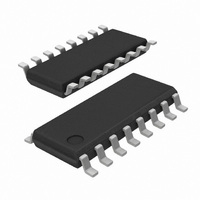SI2493-C-FS Silicon Laboratories Inc, SI2493-C-FS Datasheet - Page 136

SI2493-C-FS
Manufacturer Part Number
SI2493-C-FS
Description
IC ISOMODEM SYSTEM-SIDE 16SOIC
Manufacturer
Silicon Laboratories Inc
Specifications of SI2493-C-FS
Mfg Application Notes
SI2493/57/34/15/04, Appl Note AN93
Data Format
V.21, V.22, V.23, V.29, V.32, V.34, V.90, V.92, Bell 103, Bell 212A
Baud Rates
56k
Interface
UART
Voltage - Supply
3 V ~ 3.6 V
Mounting Type
Surface Mount
Package / Case
16-SOIC (3.9mm Width)
Lead Free Status / RoHS Status
Lead free / RoHS Compliant
Available stocks
Company
Part Number
Manufacturer
Quantity
Price
Company:
Part Number:
SI2493-C-FSR
Manufacturer:
DY
Quantity:
8 623
Part Number:
SI2493-C-FSR
Manufacturer:
SIEMENS/西门子
Quantity:
20 000
- Current page: 136 of 230
- Download datasheet (7Mb)
AN93
Homologation testing requires that the Si2493/57/34/15/
04 signal output be measured for each modulation and
data rate. The AT&T3 command establishes an analog
loopback connection to the phone line and places the
modem in data mode. The modulation is controlled by
the &H command. This command is insufficient for
homologation for several reasons:
Once transmission with automatic data generation is
After the &T4 or &T5 command is issued and the
modulation output has begun, a result code stating
“CONNECT” followed by the data rate (as if the output
were an actual connection) is sent. The 300 bps rate
does not give the speed after “CONNECT.” The &G4
command allows V.34/2400bps operation, and &G3
allows V.22bis/1200 bps operation.
The answer tone output must also be measured during
homologation testing. A bit in memory allows a
continuous answer tone to be output in the same way
as a continuous DTMF tone through the AT*Y1
command. After issuing the commands, AT&H10 and
AT*Y2A (separate line required for each), a constant
answer tone is produced, and the modem is returned to
command mode. The tone continues until a character is
received or the S7 timer expires. After the command
has been terminated, the modem returns on-hook and
sends the “NO CARRIER” message.
136
It is not possible to configure the output tone to be as
if from the answering or originating modem.
It is not possible to configure the data rate used in an
analoop connection within a given modulation.
Three data patterns need to be sent during output
testing: all marks, all spaces, and random data.
0 (default)
S41
1
2
3
4
5
2400 symbols/second
2743 symbols/second
2800 symbols/second
3000 symbols/second
3200 symbols/second
3429 symbols/second
V.34 Symbol Rate
Table 93. Symbol/Data Rate
Rev. 0.9
initiated, the modem goes off-hook and begins to
transmit the data in the modulation selected by the
existing &H command. Transmission continues until the
ATH command is sent after escape.
The data sent during &T4 and &T5 transmission tests is
controlled by the S40 register.
The data rate for &T4 and &T5 commands is controlled
by the existing &G command. In V.34 cases, where a
data rate may use multiple symbol rates, the symbol
rate is controlled by the S41 register. If an invalid
combination of data/symbol rate is selected, the modem
chooses a valid symbol rate. It is the responsibility of
the operator to select valid combinations for testing.
For homologation testing, it may be necessary to output
the V.29 modulation with transmit data. The +FTM
command includes additional codes given in Table 94 to
initiate output with the transmit data specified in S40.
The AT+FCLASS=0 command must be sent before any
other analoop test or connection is made. The modem
must remain on-hook for a time programmed in S-
register 50. Any attempt to go off-hook is delayed by this
time in 1 s units. S-50 default is 3 seconds.
+FTM=
53
55
Transmit Modulation
Table 94. V.29 Data Rate
Allowable Data Rates
V.29
V.29
2400–21600
4800–26400
4800–26400
4800–28800
4800–31200
7200–33600
Data Rate
7200
9600
Related parts for SI2493-C-FS
Image
Part Number
Description
Manufacturer
Datasheet
Request
R
Part Number:
Description:
SOIC 16/C�/56 KBPS, V.92 ISOMODEM 16-PIN SYSTEM-SIDE - LEAD-FREE
Manufacturer:
Silicon Laboratories Inc
Part Number:
Description:
TSSOP 24/I�/56 KBPS, V.92 ISOMODEM SYSTEM-SIDE
Manufacturer:
Silicon Laboratories Inc
Part Number:
Description:
IC ISOMODEM SYSTEM-SIDE 24TSSOP
Manufacturer:
Silicon Laboratories Inc
Datasheet:
Part Number:
Description:
56 KBPS, V.92 ISOMODEM SYSTEM-SIDE - LEAD-FREE TSSOP 0 TO 7
Manufacturer:
Silicon Laboratories Inc
Datasheet:
Part Number:
Description:
Telecom ICs CONTACT SILICON LABS FOR AVAILABILITY
Manufacturer:
Silicon Laboratories Inc
Part Number:
Description:
IC ISOMODEM SYSTEM-SIDE 16SOIC
Manufacturer:
Silicon Laboratories Inc
Datasheet:
Part Number:
Description:
IC ISOMODEM SYSTEM-SIDE 24TSSOP
Manufacturer:
Silicon Laboratories Inc
Datasheet:

Part Number:
Description:
IC ISOMODEM W/ERROR CORR 16SOIC
Manufacturer:
Silicon Laboratories Inc
Datasheet:
Part Number:
Description:
IC ISOMODEM W/ERROR CORR 24TSSOP
Manufacturer:
Silicon Laboratories Inc
Datasheet:

Part Number:
Description:
IC ISOMODEM W/DAA 16SOIC
Manufacturer:
Silicon Laboratories Inc
Datasheet:
Part Number:
Description:
IC ISOMODEM SYSTEM-SIDE 24TSSOP
Manufacturer:
Silicon Laboratories Inc
Datasheet:
Part Number:
Description:
IC ISOMODEM W/ERROR CORR 24TSSOP
Manufacturer:
Silicon Laboratories Inc
Datasheet:
Part Number:
Description:
IC ISOMODEM W/DAA 24TSSOP
Manufacturer:
Silicon Laboratories Inc
Datasheet:











